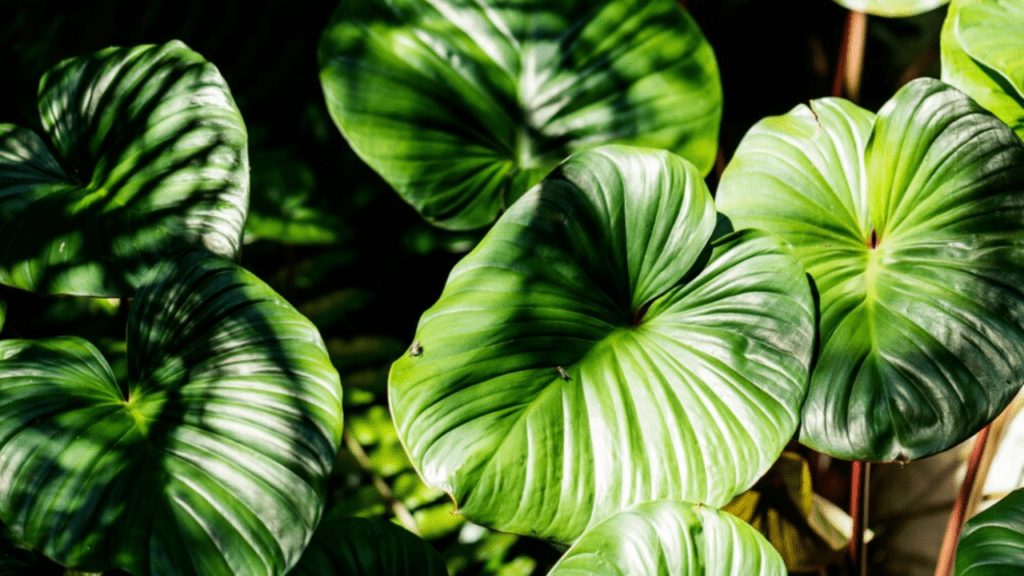
Large Leaf Outdoor Plants: Transform Your Garden with Bold Foliage
If you’re looking to transform your garden into a stunning outdoor oasis, incorporating large leaf outdoor plants is a great way to achieve that goal. These plants can add a dramatic and lush look to your landscaping, creating a visually stunning outdoor space. In this post, we’ll highlight some of the best large leaf outdoor plants and provide tips on how to incorporate them into your garden for spectacular outdoor landscaping.
Table of Contents
ToggleIntroduction to Large Leaf Outdoor Plants
Large leaf outdoor plants are not just ordinary garden additions; they are bold statements of natural grandeur and elegance. With their expansive foliage and captivating presence, these plants have the ability to transform any outdoor space into a lush paradise. In this introduction, we will embark on a journey to discover the beauty, versatility, and significance of large leaf outdoor plants, exploring why they are essential elements in any garden landscape.
Beauty and Diversity
Large leaf outdoor plants boast an astonishing diversity of shapes, sizes, and textures, each contributing to the visual tapestry of a garden. From the broad, tropical leaves of elephant ears to the intricate patterns of caladiums, these plants captivate with their striking foliage. Whether they flaunt vibrant hues or subtle variegations, their leaves command attention and infuse landscapes with a sense of drama and opulence.
Versatility in Design
One of the most compelling aspects of large leaf outdoor plants is their versatility in garden design. These plants serve as focal points, creating captivating visual anchors that draw the eye and lend structure to garden compositions. They also excel as backdrops, providing a lush green canvas against which other plants can shine. Whether used in formal arrangements or whimsical woodland gardens, large leaf plants add depth, texture, and character to outdoor landscapes.
Practical Benefits
Beyond their aesthetic appeal, large leaf outdoor plants offer numerous practical benefits for gardeners and landscapers. Their expansive foliage provides shade and shelter for smaller plants, helping to create microclimates that support biodiversity and promote healthy growth. Additionally, many large leaf plants are low-maintenance and resilient, requiring minimal care once established. This makes them ideal choices for busy gardeners or those seeking resilient and sustainable landscaping solutions.
Cultural Significance
Throughout history, large leaf plants have played significant roles in various cultures and traditions around the world. From the sacred symbolism of banana leaves in tropical cultures to the artistic inspiration of hosta gardens in Japanese landscapes, these plants have left an indelible mark on human society. Today, they continue to inspire awe and admiration, connecting us to the rich tapestry of botanical heritage and natural wonder.
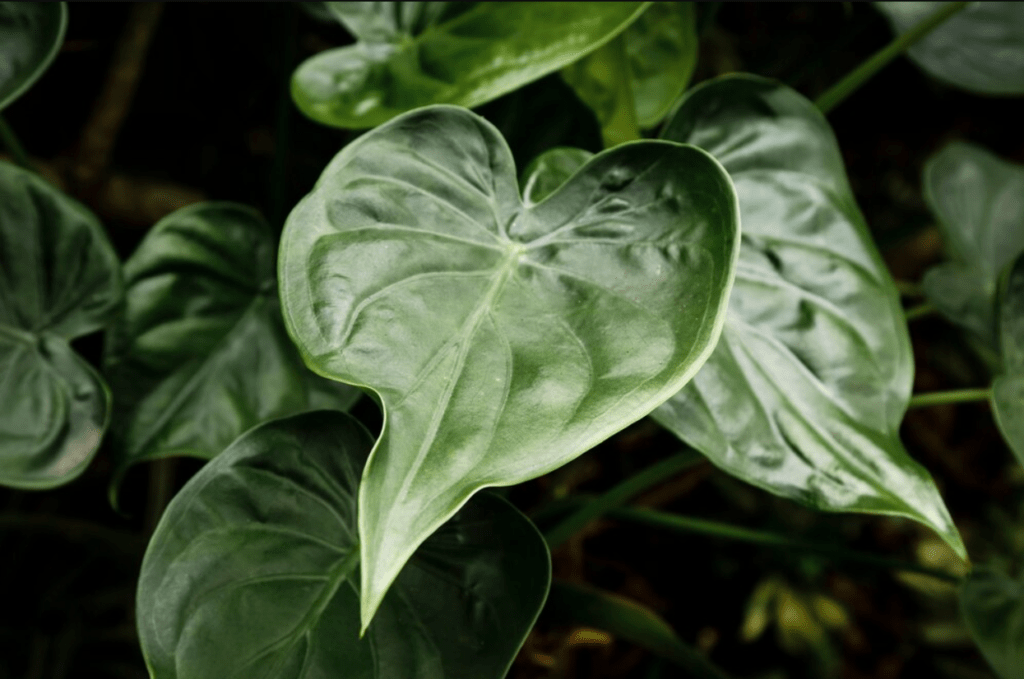
Benefits of Incorporating Large Leaf Plants into Your Garden
Large leaf plants aren’t just landscaping showstoppers; they offer a multitude of advantages that enhance your outdoor space both aesthetically and functionally. Here’s a closer look at the benefits of incorporating these leafy giants into your garden:
Instant Tropical Transformation:
Craving a touch of paradise? Large leaf plants like banana plants (Musa spp.) with their enormous, blue-green fronds instantly transport you to a world of lush greenery. These statement pieces bring the vibrant spirit of the tropics right to your backyard.
Privacy Powerhouses:
Yearning for a secluded haven in your garden? Look no further than large leaf plants! Elephant ears (Colocasia esculenta) with their heart-shaped, elephant-ear sized leaves, or Castor beans (Ricinus communis) with their dramatic, deeply lobed foliage, create natural privacy screens. These leafy giants act as living walls, filtering light and adding a touch of mystery to your garden retreat.
Microclimate Marvels:
Large leaf plants can significantly impact your garden’s microclimate. Their expansive leaves act as living umbrellas, casting shade on nearby plants and creating cooler pockets in your garden during hot summer days. This is especially beneficial for shade-loving plants that might otherwise struggle in full sun.
Boosting Biodiversity:
Large leaf plants not only provide shade but also create inviting habitats for a variety of beneficial creatures. The lush foliage attracts butterflies, hummingbirds, and other pollinators, promoting biodiversity in your garden. These beautiful creatures help maintain a healthy ecosystem by aiding in plant reproduction.
Dramatic Focal Points:
Large leaf plants can be the stars of the show! A majesty palm (Ravenea rivularis) with its symmetrical clusters of large, feathery fronds creates a stunning focal point in any garden. Their architectural presence adds a touch of sophistication and elegance, drawing the eye and anchoring your garden design.
Textural Tapestry:
Large leaf plants offer a delightful interplay of textures, adding depth and visual interest to your garden. The velvety surface of a Canna Lily (Canna indica) with its vibrant blooms contrasts beautifully with the waxy sheen of a Hosta (Hosta spp.) with its diverse foliage colors. This textural variation creates a dynamic and visually captivating landscape.
Improved Air Quality:
Just like any other plant, large leaf beauties contribute to cleaner air. They absorb carbon dioxide and release oxygen, helping to purify the air in your garden and surrounding areas. This is a welcome benefit, especially in urban environments.
By incorporating large leaf plants into your garden, you’re not just enhancing the aesthetics; you’re creating a more functional and ecologically friendly outdoor space. So, embrace the leafy giants, and watch your garden transform into a vibrant oasis teeming with life and beauty.
Best Large Leaf Plants for Outdoor Landscaping
Large leaf plants are the ultimate way to add drama and sophistication to your outdoor space. Here are some of the best large leaf plants for outdoor landscaping, along with their benefits and planting tips:
Banana Plants (Musa spp.)
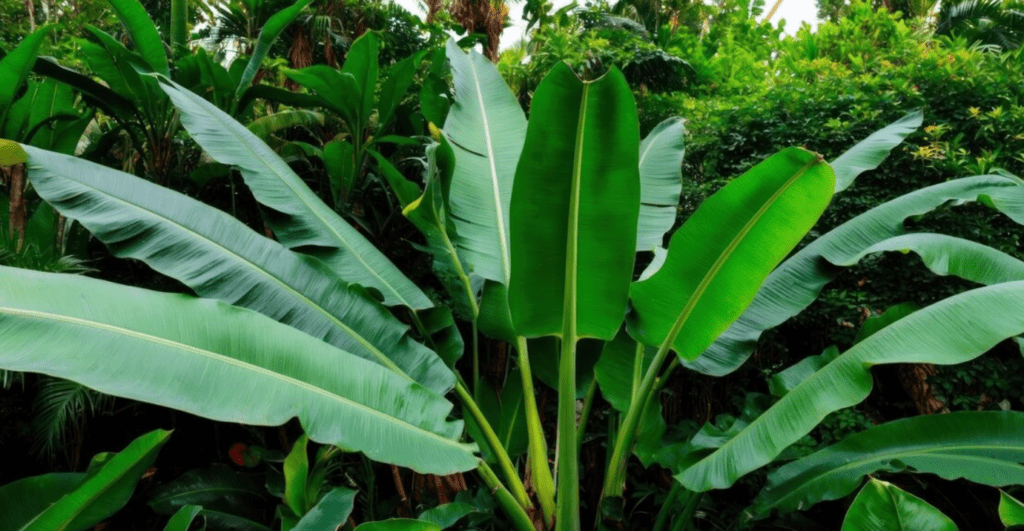
- Benefit: Instant tropical vibes
- Planting Tips: Full sun to partial shade, moist but well-draining soil. Protect from frost.
Elephant Ears (Colocasia esculenta)
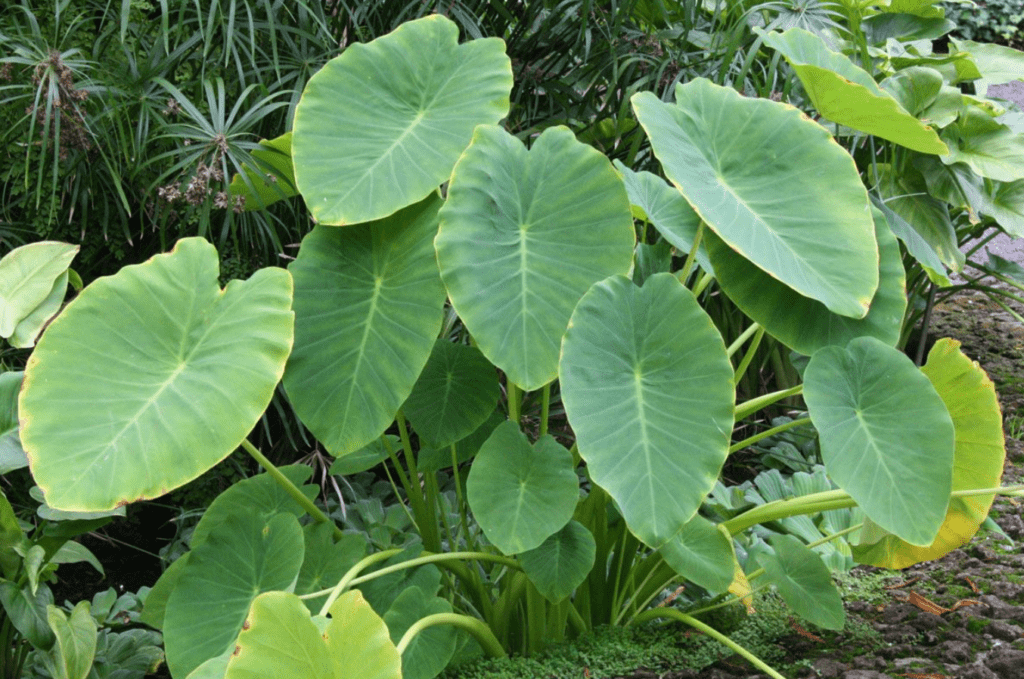
- Benefit: Privacy powerhouse
- Planting Tips: Partial shade to full shade, moist soil. Can be grown as container plants.
Castor Beans (Ricinus communis)
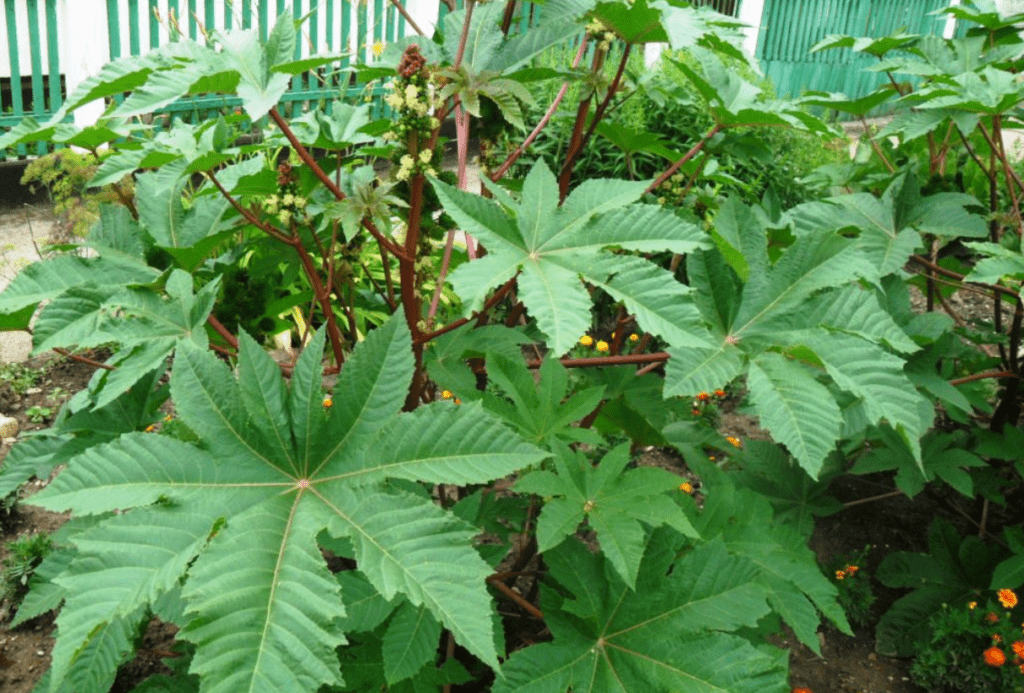
Important Note: Castor beans are poisonous, so plant them with caution if you have children or pets.
- Benefit: Privacy powerhouse
- Planting Tips: Full sun, well-draining soil.
Majesty Palm (Ravenea rivularis)
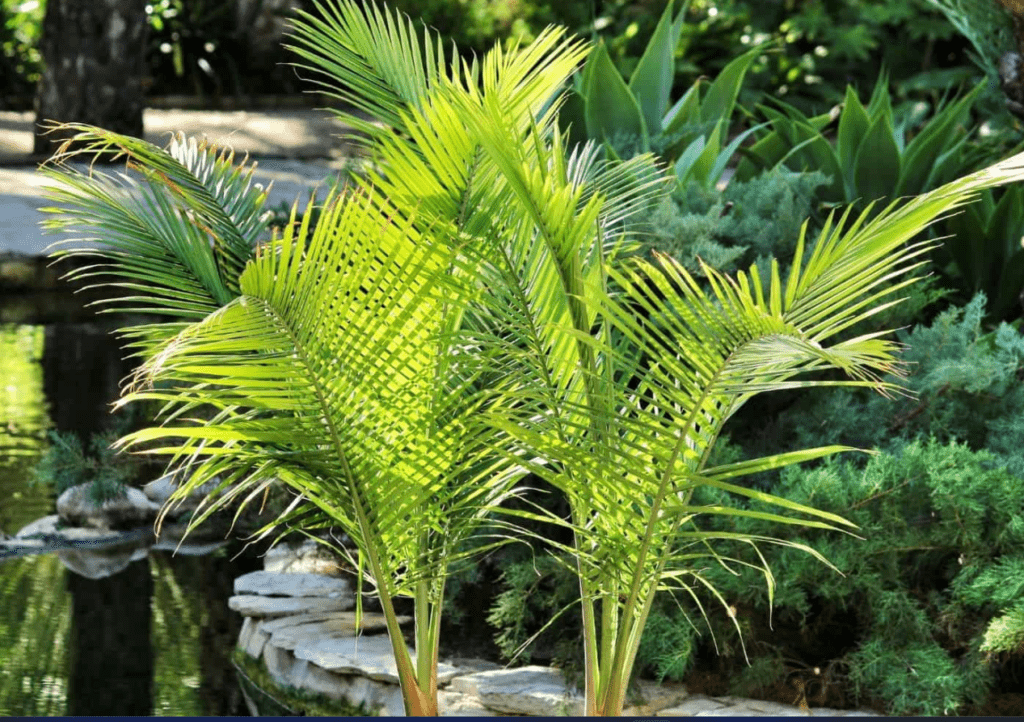
- Benefit: Dramatic focal point
- Planting Tips: Full sun to partial shade, well-draining soil. Not frost-tolerant, so grow in containers if you live in colder climates.
Canna Lily (Canna indica)
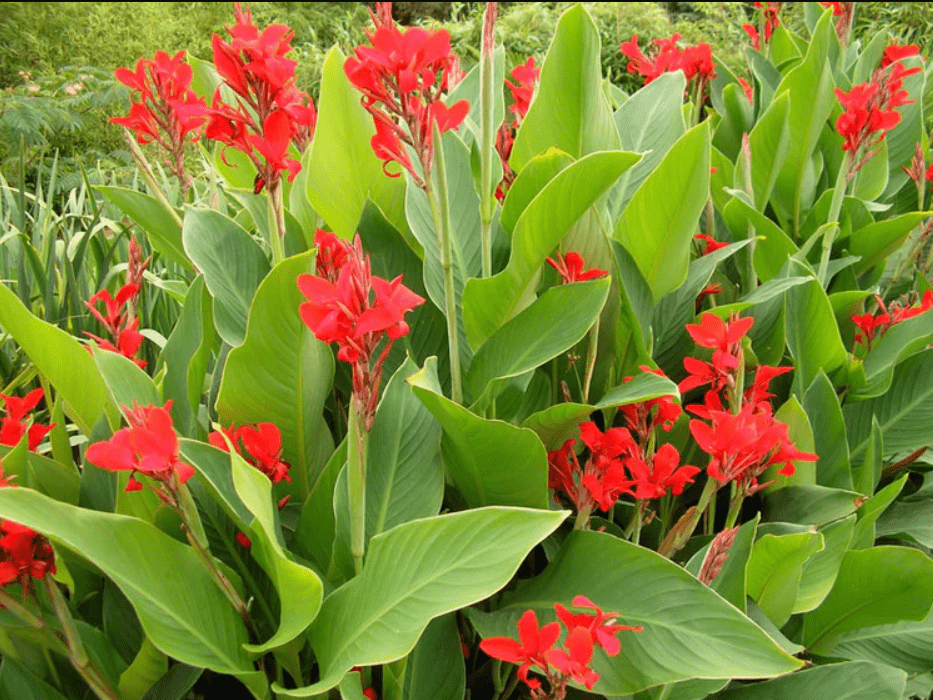
- Benefit: Textural tapestry and vibrant blooms
- Planting Tips: Full sun to partial shade, moist but well-draining soil. Lift and store the bulbs indoors over winter in colder climates.
Hosta (Hosta spp.)
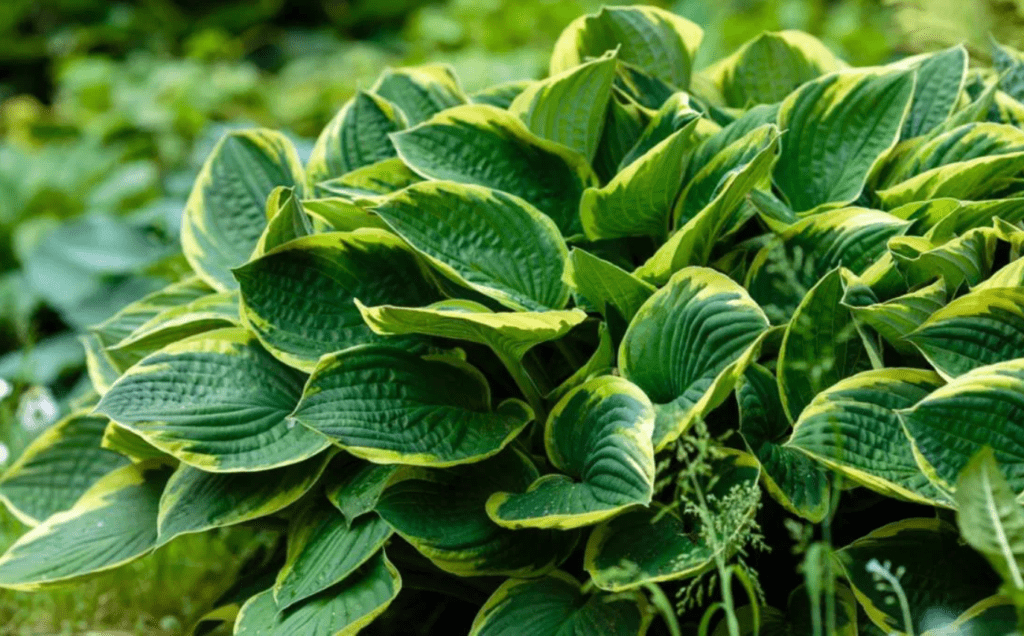
- Benefit: Textural tapestry, shade tolerance
- Planting Tips: Shade, moist soil.
Agave (Agave spp.)
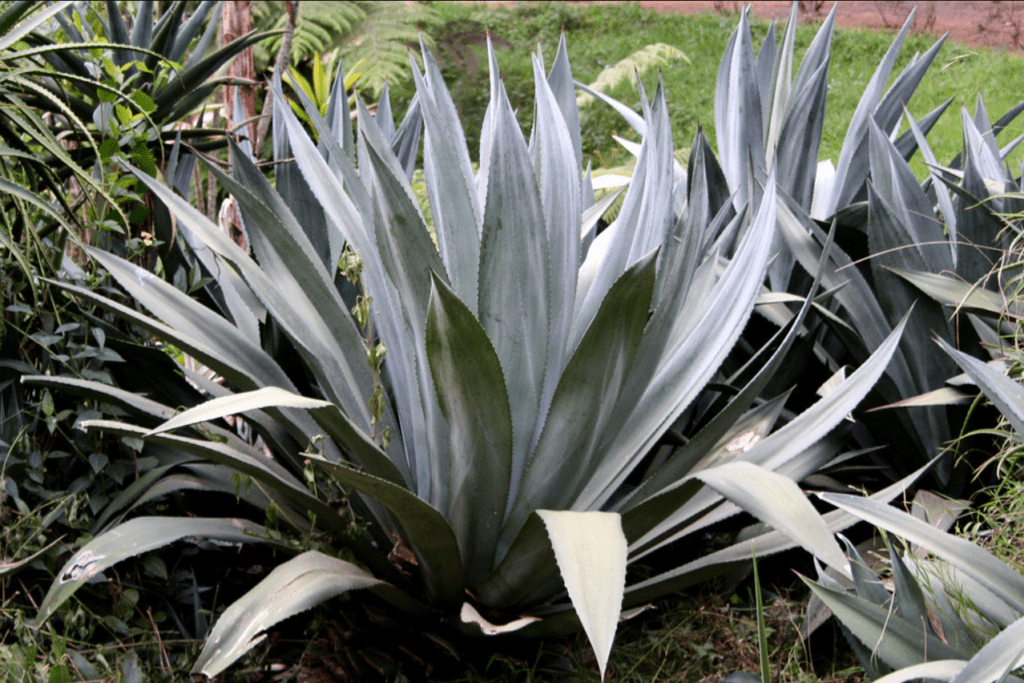
- Benefit: Drought tolerance, architectural interest
- Planting Tips: Full sun, well-draining soil.
Fan Palm (Livistona chinensis)
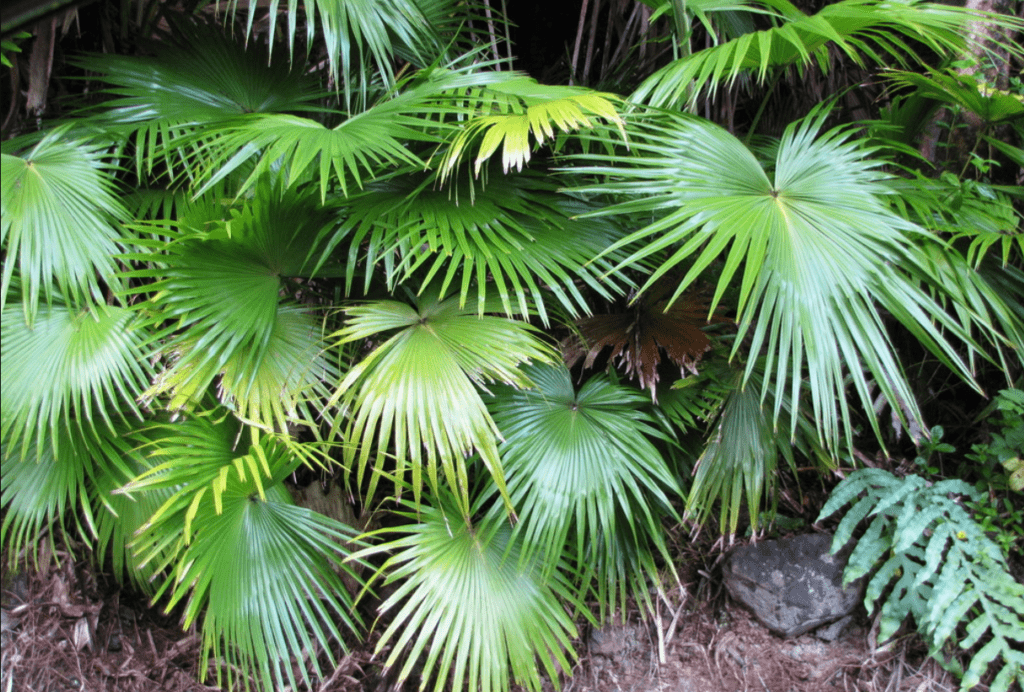
- Benefit: Architectural interest
- Planting Tips: Partial shade to full shade, moist but well-draining soil. Protect from frost.
Monstera Deliciosa (Monstera deliciosa)
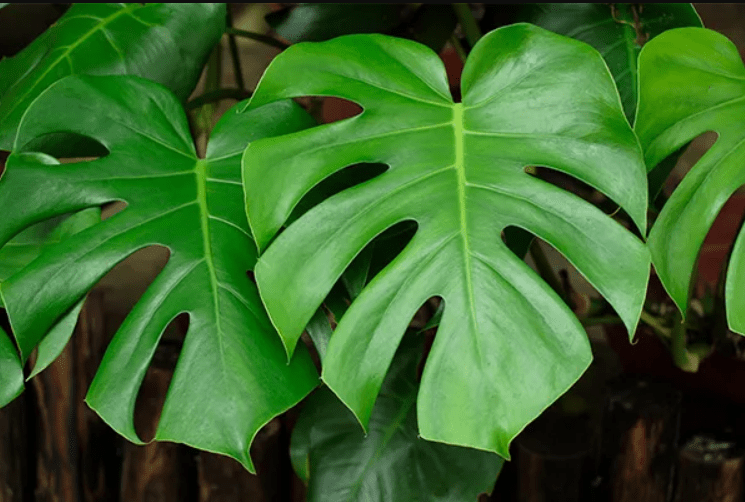
- Benefit: Indoor or outdoor (depending on climate) dramatic foliage
- Planting Tips: Partial shade to full shade, moist but well-draining soil. Can be grown as a container plant and brought indoors over winter in colder climates.
Bird of Paradise (Strelitzia reginae)
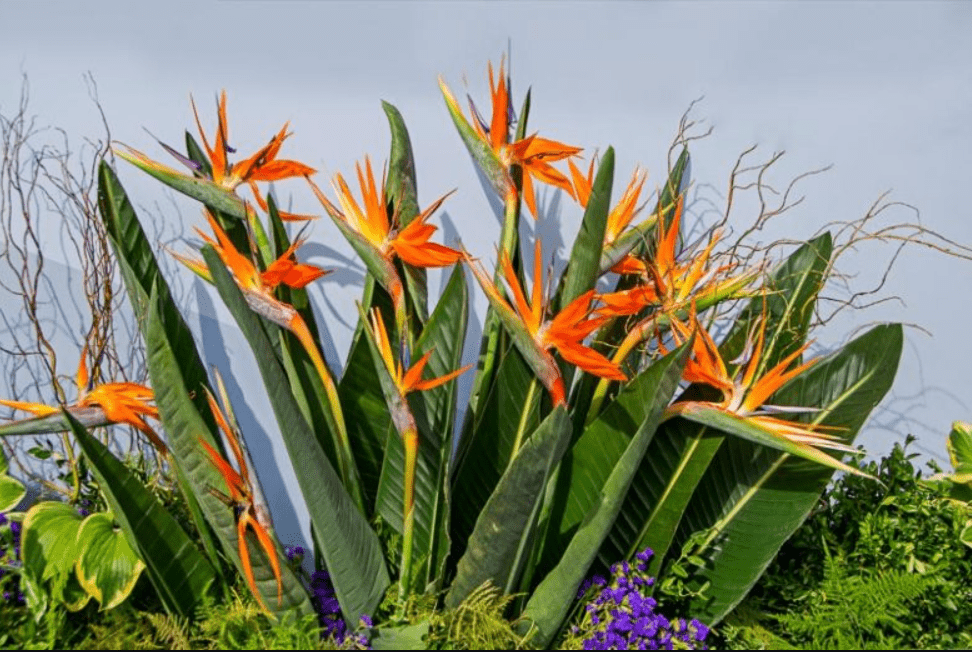
- Benefit: Unique and exotic blooms
- Planting Tips: Full sun, well-draining soil. Protect from frost or grow in containers.
4. Tips for Incorporating Large Leaf Plants into Your Garden Design
Large leaf plants are nature’s architectural marvels, transforming your garden into a captivating oasis. But before you get swept away by their grandeur, consider these helpful tips to ensure these leafy giants seamlessly integrate into your garden design:
Know Your Light:
- Sun Seekers vs. Shade Dwellers: Not all large leaf plants are created equal. Research the light requirements of each plant. Banana plants (Musa spp.) thrive in full sun to partial shade, while Hostas (Hosta spp.) prefer the cool comfort of shade. Matching the plant’s needs to the available light ensures healthy growth and optimal visual impact.
Scale Matters:
- Respecting the Giants: Large leaf plants can grow to impressive heights and widths. Avoid overcrowding your garden beds, as this can block sunlight and air circulation for neighboring plants.
Focal Point Power:
- Stars of the Show: Large leaf plants can be the centerpieces of your garden design. Use a Majesty Palm (Ravenea rivularis) with its symmetrical clusters of feathery fronds to create a dramatic focal point in a shady corner.
Textural Tapestry:
- Play with Texture: Large leaf plants offer a delightful interplay of textures. Canna Lilies (Canna indica) with their velvety blooms contrast beautifully with the waxy sheen of Hostas. This textural variation adds depth and visual interest to your garden design.
Color Coordination:
- A Symphony of Hues: Consider the foliage color of your large leaf plants when creating your garden palette. The deep green of Elephant Ears (Colocasia esculenta) complements the chartreuse hues of ferns, while the burgundy foliage of certain Canna Lilies adds a vibrant pop of color.
Privacy with a Punch:
- Living Walls: Large leaf plants like Castor Beans (Ricinus communis) with their dramatic foliage create natural privacy screens. Plant them strategically to block unsightly views or create secluded havens within your garden.
Container Creativity:
- Don’t Limit Yourself: Not all large leaf plants require in-ground planting. Grow Majesty Palms or Bird of Paradise (Strelitzia reginae) in stylish containers for a touch of drama on your patio or flanking your entryway. Container gardening also allows you to bring frost-sensitive plants indoors during winter.
Companion Planting:
- The Art of Coexistence: Carefully consider companion plants for your large leaf beauties. Lower-growing, shade-loving plants like Caladiums or Begonias can thrive under the dappled shade cast by larger fronds.
Mulch Magic:
- Moisture Retention and Weed Control: Apply a layer of mulch around the base of your large leaf plants. Mulch helps retain moisture in the soil, regulates soil temperature, and suppresses weeds, reducing maintenance needs.
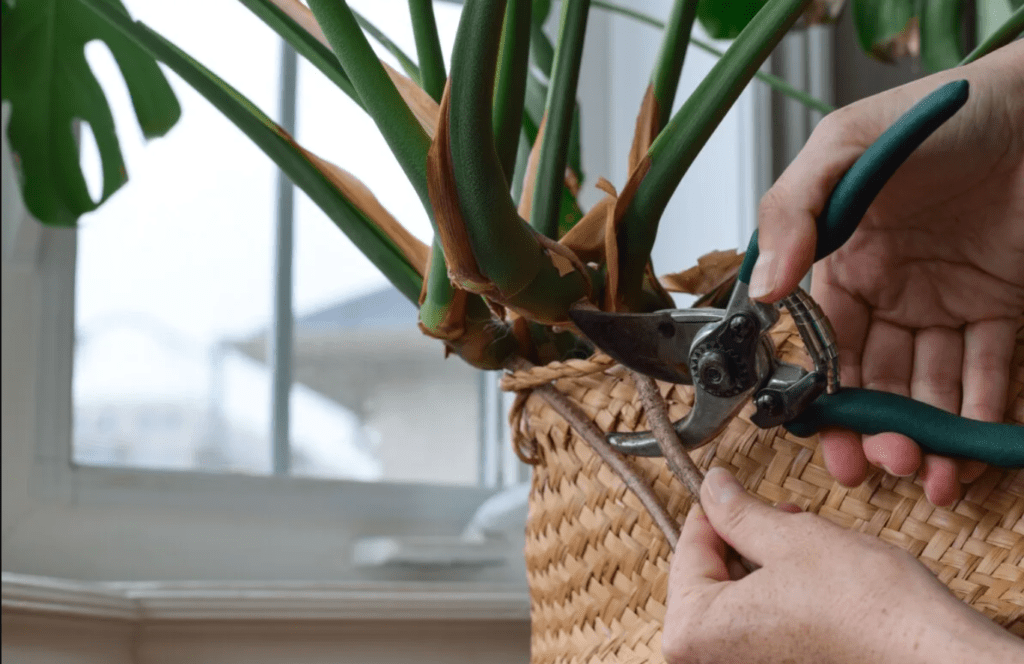
Maintenance Matters:
- Regular Care: Large leaf plants require proper care to maintain their lush foliage. Regular watering, especially during hot weather, and occasional feeding with a balanced fertilizer will keep your leafy giants thriving. Prune strategically to maintain the desired shape and remove dead or damaged leaves.
By following these tips, you can transform your garden into a captivating landscape where large leaf plants take center stage, creating a harmonious balance of beauty and functionality. So, embrace the drama, celebrate the grandeur, and let your garden flourish with the magic of these leafy giants.
Maintenance and Care for Large Leaf Outdoor Plants
Large leaf plants are the envy of any garden, adding a touch of the tropics and drama to your outdoor space. But with greatness comes responsibility! Ensuring these leafy giants thrive requires proper care and maintenance. Here’s a comprehensive guide to keep your large leaf beauties flourishing:
Watering Wisely:
- Hydration Heroes: Large leaves translate to increased water needs. Aim to keep the soil consistently moist, but avoid soggy conditions that can lead to root rot.
- Know Your Plant: Research the specific watering needs of each large leaf plant. Some, like Canna Lilies (Canna indica), may require more frequent watering than others, like Agave (Agave spp.) which are drought tolerant.
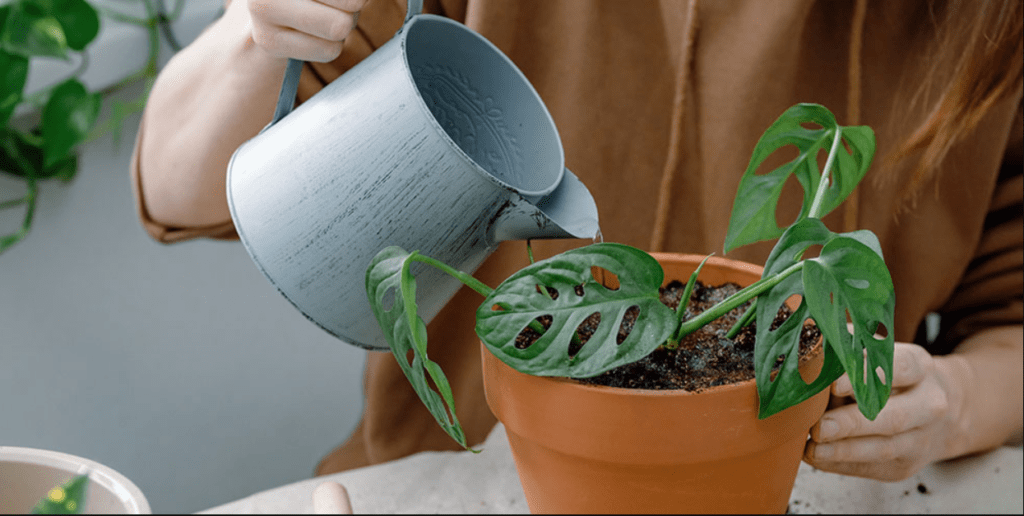
Feeding for Growth:
- Nutrient Nurture: Large leaf plants benefit from regular feeding during their active growing season (usually spring and summer). Use a balanced fertilizer formulated for flowering or foliage plants, following the recommended dilution and frequency instructions.
- Less is More: Avoid over-fertilizing, as this can damage the roots and hinder overall plant health.
Sun Salutations (or Shade Retreats):
- Right Light, Right Growth: Remember, not all large leaf plants are created equal when it comes to light requirements. Banana plants (Musa spp.) thrive in full sun to partial shade, while Hostas (Hosta spp.) prefer the dappled shade of a shady corner. Planting your large leaf plants in the appropriate light conditions ensures healthy growth and optimal visual impact.
Mulch Magic:
- Moisture Retention and Weed Control: Apply a layer of mulch around the base of your large leaf plants, around 2-3 inches thick. Mulch helps retain moisture in the soil, regulating soil temperature and suppressing weeds. This reduces maintenance needs and creates a clean, finished look around your plants. Choose organic mulch like shredded bark or wood chips for best results.
Pruning for Perfection:
- Maintaining Shape and Beauty: Regular pruning is essential for maintaining the desired shape and size of your large leaf plants. For example, strategically prune Majesty Palms (Ravenea rivularis) to remove any fronds that detract from the symmetrical form.
- Focus on Freshness: Remove dead, diseased, or damaged leaves to promote healthy growth and improve air circulation. Always use sharp, sterilized pruning shears to avoid harming the plant.
Seasonal Shifts:
- Winter Considerations: If you live in a region with cold winters, some large leaf plants like Banana plants or Bird of Paradise (Strelitzia reginae) are not frost-tolerant. Bring these container plants indoors to a sunny location for the winter months. For in-ground large leaf plants that can tolerate some cold, protect them with a layer of mulch around the base and cover the foliage with burlap or frost cloth if frost is imminent.
Pest Patrol:
- Early Detection is Key: Regularly inspect your large leaf plants for signs of pests like aphids, mealybugs, or scale. Early detection and intervention are crucial to prevent problems from escalating. Opt for organic control methods whenever possible, such as insecticidal soap or neem oil sprays, to minimize harm to the environment and beneficial insects.
Additional Tips:
- Repotting Gracefully: For container-grown large leaf plants, repot them every 2-3 years or when the roots outgrow the pot. Choose a pot that’s only a few inches larger in diameter than the current one to avoid overwatering issues.
- Enjoy the Journey: Caring for large leaf plants can be a rewarding experience. Observe your plants and adjust your care routine as needed. The more you understand their specific needs, the better equipped you’ll be to keep them thriving for years to come.
By following these maintenance and care tips, you can ensure your large leaf plants become the stars of your garden, adding a touch of drama, elegance, and lush greenery to your outdoor space. Remember, a little effort goes a long way in keeping these leafy giants happy and healthy!
Creating a Spectacular Outdoor Oasis with Large Leaf Plants
Large leaf plants are more than just landscaping elements; they’re transformative tools that weave magic into your outdoor space. Imagine a lush retreat, a hidden paradise where towering foliage whispers secrets and vibrant textures captivate the senses. With careful planning and these inspiring ideas, you can turn your dream into a reality, crafting a spectacular oasis with large leaf plants.
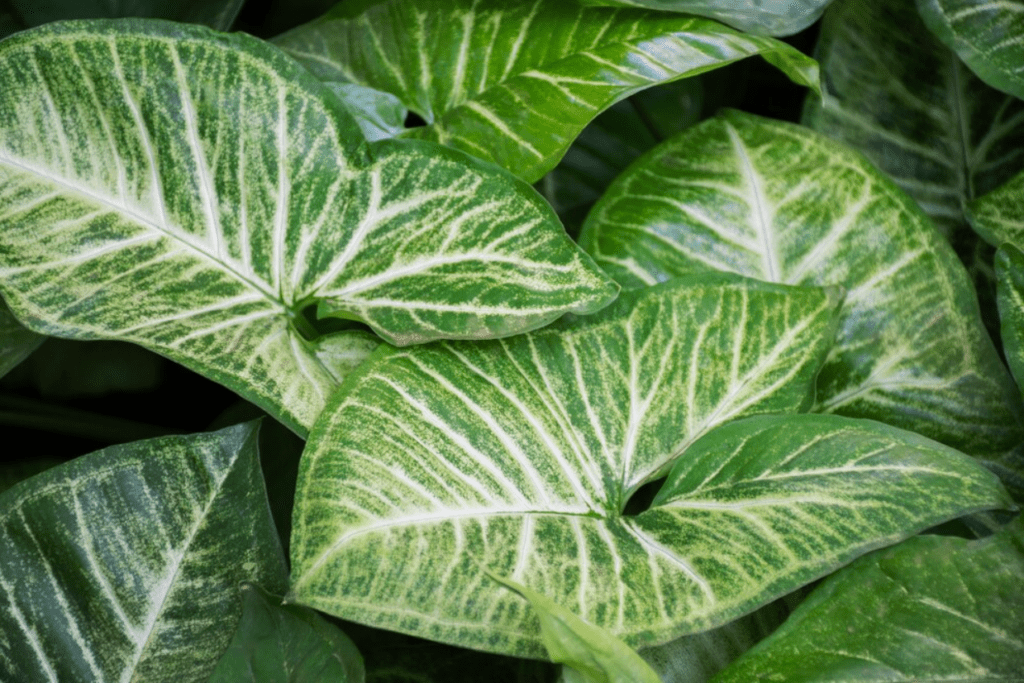
Conceptualizing Your Paradise:
- Tropical Escape: Channel the essence of a luxurious resort by incorporating Banana plants (Musa spp.) with their enormous, blue-green fronds. Scatter Bird of Paradise (Strelitzia reginae) with their exotic bird-like blooms for pops of color. Create a winding pathway edged with Canna Lilies (Canna indica) to add pops of vibrant hues and textural contrast.
- Tranquil Shade Sanctuary: Embrace the serenity of a hidden grove. Hostas (Hosta spp.) with their diverse foliage colors and textures will create a calming effect. Introduce ferns for a touch of delicate greenery, and intersperse them with ornamental grasses like Maidenhair Grass (Miscanthus sinensis) for a gentle swaying movement in the breeze.
- Dramatic Focal Points: Make a statement with a singular, impressive specimen. A Majesty Palm (Ravenea rivularis) with its symmetrical clusters of large, feathery fronds adds instant sophistication. Flank your entryway with Monstera Deliciosa (Monstera deliciosa) in stylish pots for a grand first impression.
Planting for Success:
- The Power of Placement: Consider the mature size and sun requirements of each plant. Group plants with similar light needs together. Banana plants thrive in full sun to partial shade, while Hostas prefer dappled shade.
- Creating Layers: Large leaf plants excel at creating a sense of depth. Plant taller varieties like Castor Beans (Ricinus communis) in the background, followed by mid-sized plants like Canna Lilies, and finish with smaller, shade-loving options like Caladiums (Caladium bicolor) at the foreground.
- The Magic of Mulch: Apply a 2-3 inch layer of organic mulch around your plants. Mulch retains moisture, regulates soil temperature, suppresses weeds, and adds a polished touch to your garden design.
Inviting Wildlife:
- A Haven for Beneficial Creatures: Large leaf plants not only add beauty but also create a habitat for butterflies, hummingbirds, and other pollinators. These beautiful creatures help maintain a healthy ecosystem by aiding in plant reproduction.
Living Walls and Privacy Retreats:
- Strategic Placement for Seclusion: Large leaf plants like Elephant Ears (Colocasia esculenta) with their heart-shaped leaves or Castor Beans with their dramatic foliage can be strategically planted to create natural privacy screens. These leafy giants act as living walls, filtering light and adding a touch of mystery to your garden oasis.
Unleashing the Nighttime Drama:
- Illuminating Accents: String fairy lights or place solar-powered lanterns strategically amongst your large leaf plants. The soft glow will highlight the dramatic textures and shapes, creating a magical ambiance after dark.
Remember:
- Container Creativity: Not all large leaf plants require in-ground planting. Grow Majesty Palms or Bird of Paradise in stylish containers for added versatility. This allows you to create dramatic focal points on your patio or flanking your entryway.
- Embrace the Journey: Creating a spectacular oasis is an ongoing process. Observe your plants, adjust your care routine as needed, and enjoy the ever-evolving beauty of your large leaf haven.
With a touch of creativity and these inspiring ideas, you can transform your outdoor space into a spectacular oasis. Let the large leaf plants be your guide, weaving a tapestry of lush greenery, captivating textures, and a touch of the tropics, right in your own backyard.
In conclusion, incorporating large leaf outdoor plants into your garden can truly transform your outdoor space into a spectacular oasis. These plants not only add visual interest and texture to your landscaping but also provide shade and privacy. Whether you’re looking to create a tropical paradise or a serene woodland retreat, these plants can help you achieve the outdoor space of your dreams. With the right selection and placement, you can create a stunning and inviting outdoor environment that you and your guests will love spending time in.
Frequently Asked Questions (FAQ)
Popular large leaf outdoor plants include elephant ears, hostas, banana plants, and gunnera.
Provide adequate sunlight, water regularly, and ensure well-draining soil. Fertilize during the growing season for optimal growth.
Hostas, ligularia, and ferns are great choices for shady areas as they thrive in low-light conditions.
Yes, many large leaf plants can be grown in containers. Ensure the container is large enough and has good drainage.
Regularly inspect plants for pests like aphids and slugs. Use organic or chemical treatments as needed and maintain good air circulation.
Large leaf plants add dramatic visual appeal, create natural shade, and can enhance privacy in your garden.
Most large leaf plants prefer well-draining, nutrient-rich soil. Amending soil with compost can improve growth.
Remove dead or damaged leaves regularly. For some plants, cutting back old growth in early spring promotes new growth.
